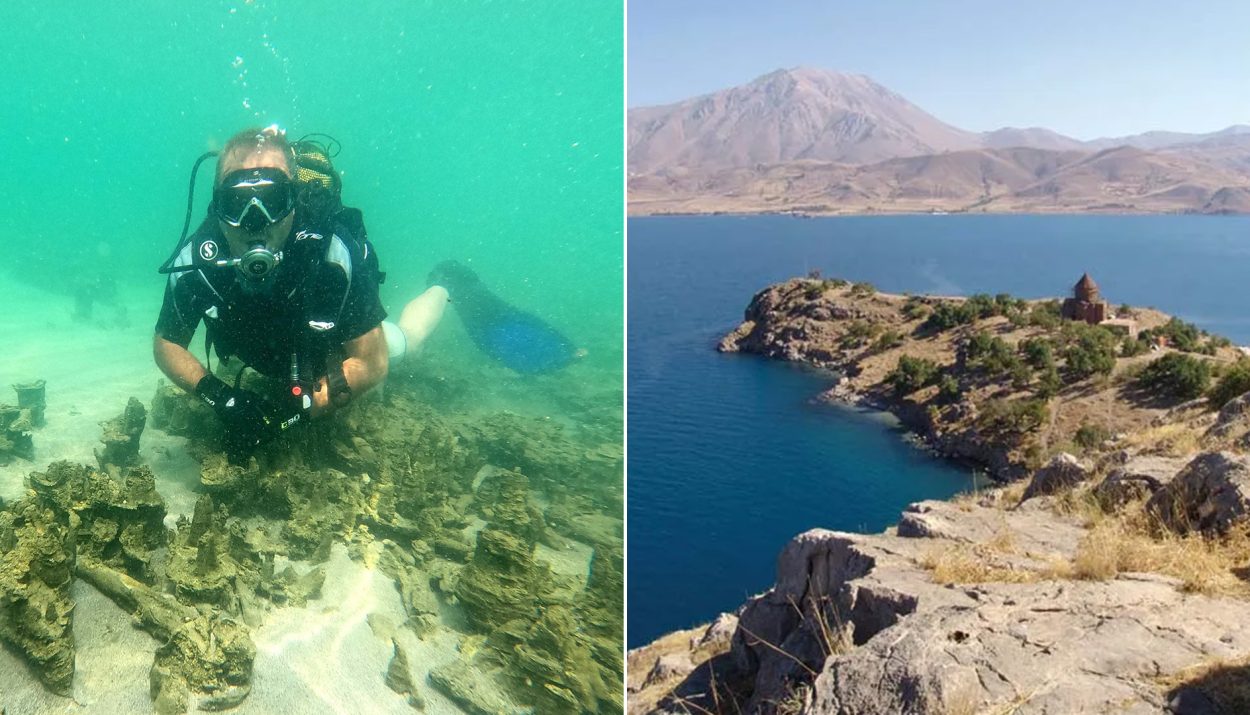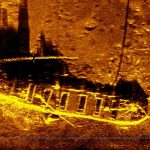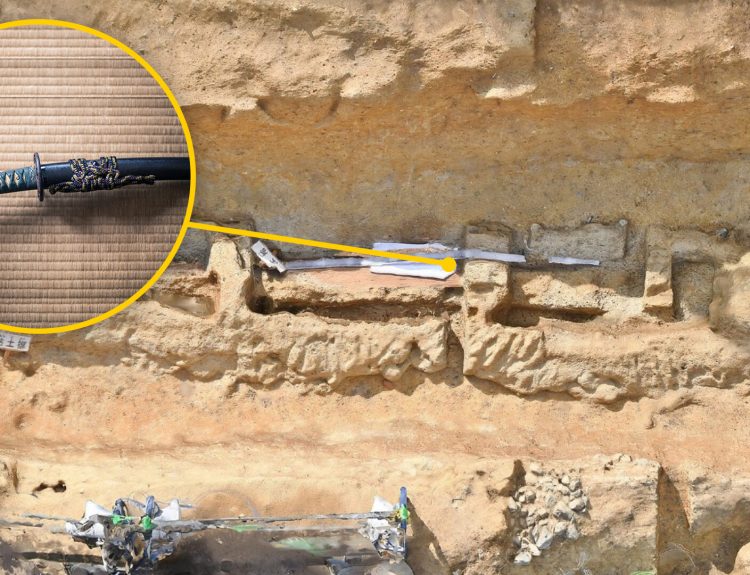What would you expect to find in a mountain lake? Some fish, a sunken rowboat, or maybe a few old boots? Those might be the extent of the treasures hiding beneath the surface of your average lake, but Turkey’s Lake Van has never been an average lake. Lake Van was formed roughly 600,000 years ago, it has been unique. It is the country’s largest lake and contains about 38% of Turkey’s surface water. But that is just the beginning. The geography of the lake is unusual and, according to local legends, it is home to a legendary water monster. But believe it or not, that’s not the biggest secret Lake Van has been keeping.
A Lake Unlike Any Other
Lake Van can be found in the eastern part of Turkey in the Armenian highlands. One of the few lakes in the world are “endorheic” lakes, meaning that they do not have outlets, Lake Van may have once had an outlet that drained to the Mural River. Geologists believe that a volcanic eruption in prehistoric times cut off this outlet to isolate Lake Van.

Lake Van is an alpine lake, situated 5,380 feet above sea level. At that altitude, temperatures in the winter months plunge to well below freezing, however Lake Van rarely freezes, except in the shallow edges. That can be attributed to the lake’s unusually high salinity. The lake is fed by several small mountain streams that collect salts and sodium carbonate as they trickle over the rocky peaks.
A Large and Deep Body of Water
Lake Van covers approximately 1,200 square miles and is 74 miles wide at its widest point. The average depth of the lake is 561 feet, but some parts of it are much deeper. The lake’s western part is composed of a large basin-like depression that averages 1,300 feet deep. Its deepest point is 1,480 feet below the surface.
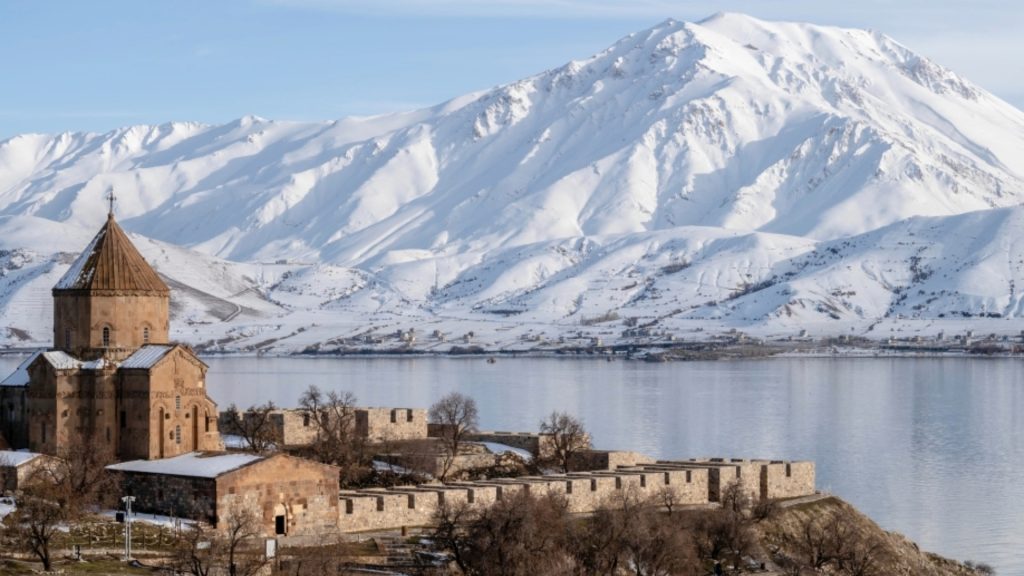
The eastern part of Lake Van is shallower. Below the water, there are rock shelves that keep the depth between 160 to 820 feet. The lake holds a tremendous volume of water, so it should come as no surprise that the lake contains some hidden secrets.
Earth’s Power Continues to Shape Lake Van
Lake Van was created more than 600,000 years ago by rising tectonic plates that moved the Earth’s crust. The region is home to several major faults and has been geologically active for thousands of years. The terrain is ever changing.
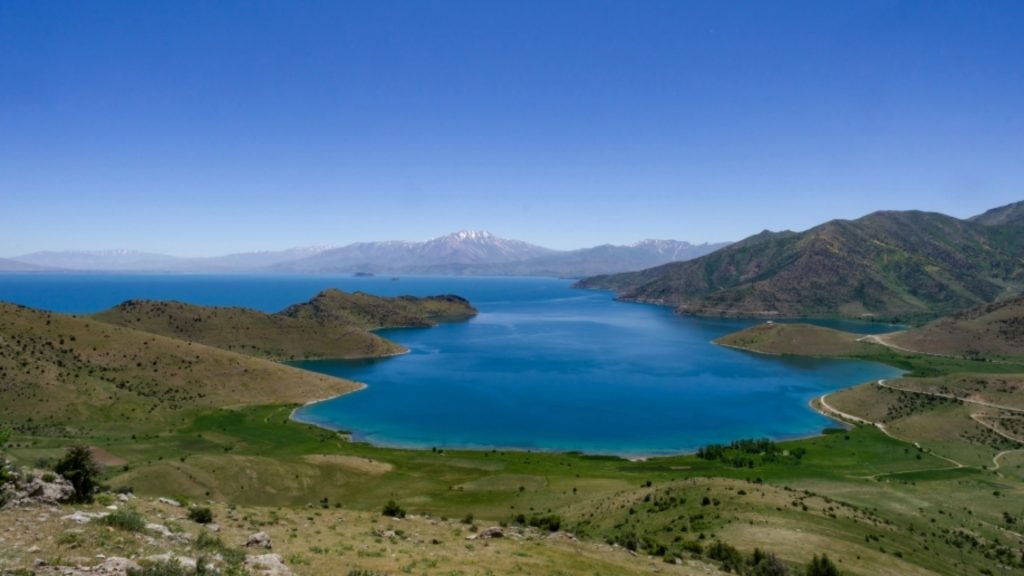
One area of continuous change is the water levels of Lake Van. Since the lake was formed, its water levels have vacillated greatly. Some of the coastal land that was used as farmland in the past is now underwater as the lake has grown. This gives us a clue as to the mysteries that lay at the bottom of Lake Van.
An Alpine Paradise
Lake Van, with its turquoise water and mountain backdrop, has long been known as one of the region’s gems. The surrounding mountain range is picturesque and lush. The region has an old-world charm that is inviting and breathtaking, from the rugged peaks to the cliff-top church that stands guard over the lake.
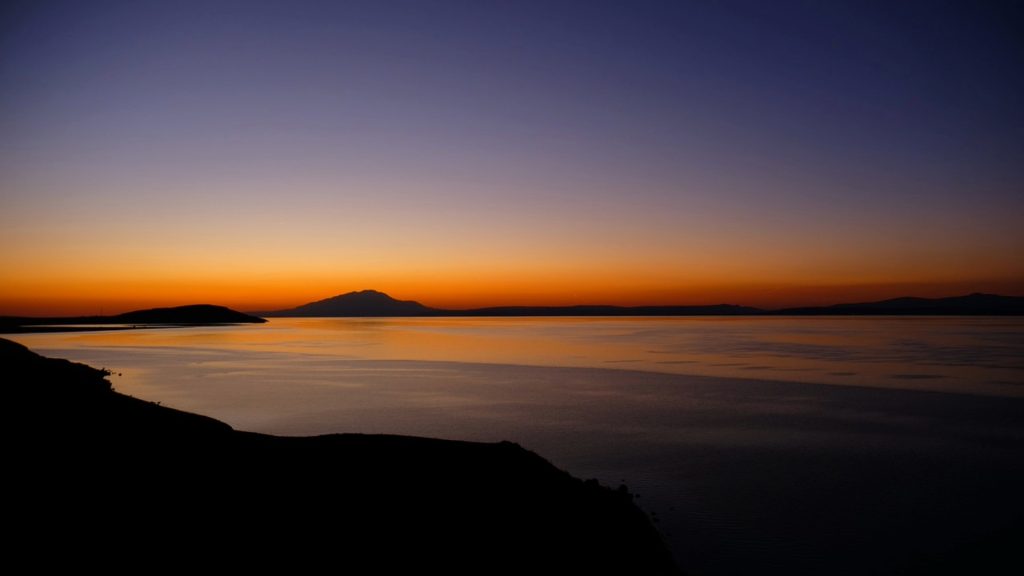
A number of important architectural sites are found at Lake Van. An island, Akdamar Island, at the lake’s southern shore boasts a 10th century Armenian cathedral, once the royal church of the Vaspurakan kingdom. The ruins of several ancient monasteries can also be found in the region. The town of Ahlat has many historic headstones left behind by the Ahlatshahs people. These headstones are listed as a UNESCO World Heritage site.
Does Nessie’s Cousin Live in Lake Van?
According to local legends, Lake Van is home to an elusive water monster akin to Scotland’s Loch Ness Monster. Dubbed the Lake Van Monster, of course, the creature is said to be between 30 and 40 feet long with a reptile-like head. The Lake Van Monster has been described as having scaly brown skin and long flippers.
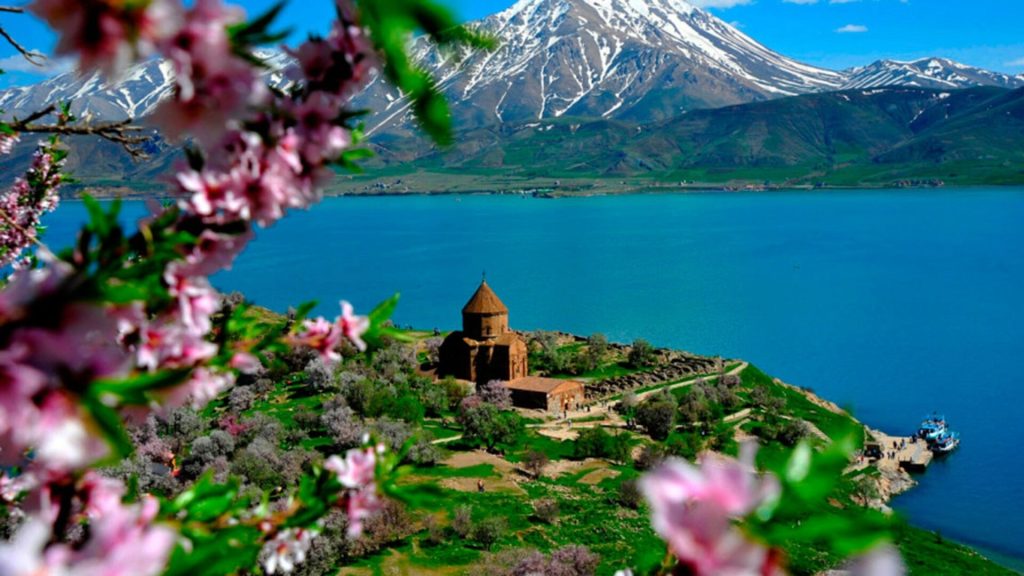
The creature, if it exists, is quite shy, and sightings are fairly rare. A few amateur photographs have been snapped of the Lake Van Monster, but they are grainy, blurry, and inconclusive. Some experts have noted that the lake monster seems to resemble either a basilosaurus or a mosasaurus, both extinct aquatic animals from the time when dinosaurs roamed the earth. Although researchers have occasionally searched the lake for the cryptic monster, the waters of Lake Van held an even more amazing secret.
An Underwater Excavation Yields an Amazing Discovery
Archaeologists recently searched Lake Van and discovered something truly unexpected beneath the waves … an ancient castle! While looking for artifacts of the past, the team of researchers happened upon a nearly complete castle that has been dated to the 7th century BC. How did an entire castle end up submerged in Lake Van? Who built this castle?

The answer to the first question is easier to answer. No, the castle is not at all connected to the legendary city of Atlantis, which, according to stories, sank beneath the waves in a single day, thanks to the powerful geographic force. The fluctuating water levels of Lake Van are to blame. The castle was constructed at the water’s edge during a time when the water levels were at their lowest, then succumbed to the wave when water levels rose again.
Who Built the Submerged Castle?
The answer to this question is far more complicated. It required plenty of good, old-fashioned research. As Indiana Jones told us, “Seventy percent of archeology is done in the library.” So that’s where researchers began.
They uncovered maps from the 9th century that offered a tantalizing clue. It showed that, long ago, a once-prominent city sat on the shores of Lake Van. There were other hints to the city’s existence. People living around the lake often unearthed relics of the past … some pottery, old tools, even pieces of jewelry. But what was this Iron Age city?
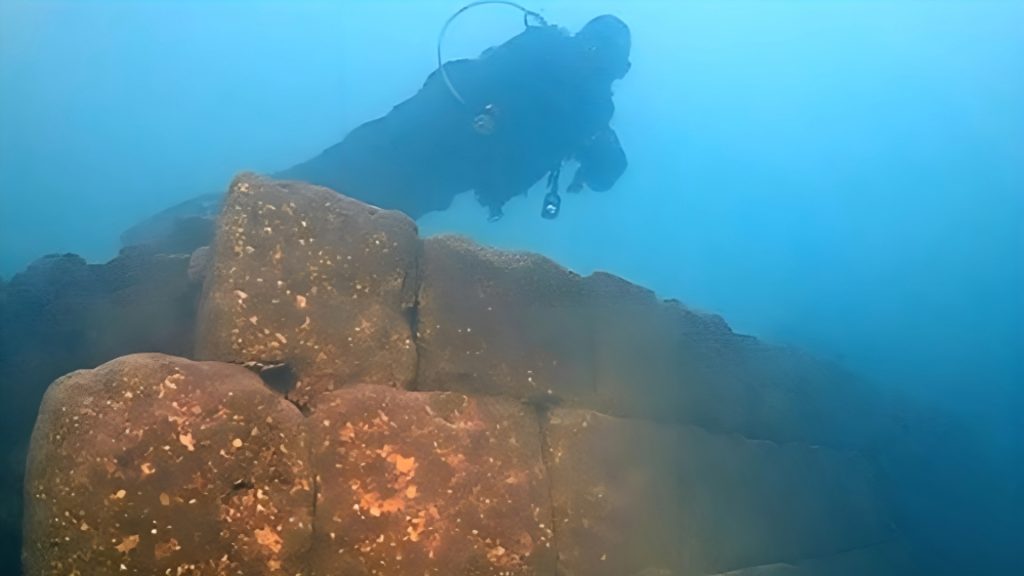
The ancient city of Tushpa was once the capital of the Urartu kingdom. A relatively small and secluded culture, not much was previously known about the Urartu people. Their history was, sadly, overshadowed by other, more powerful kingdoms in the region.
Rumors of an Underwater Structure Proved True
There had long been rumors of old buildings lying at the bottom of Lake Van. Over the centuries, as the water levels occasionally dropped, folks living along the lake could catch glimpses of strange stone structures deep under the water. But when water levels rose again, these stories were either forgotten or dismissed as folklore.
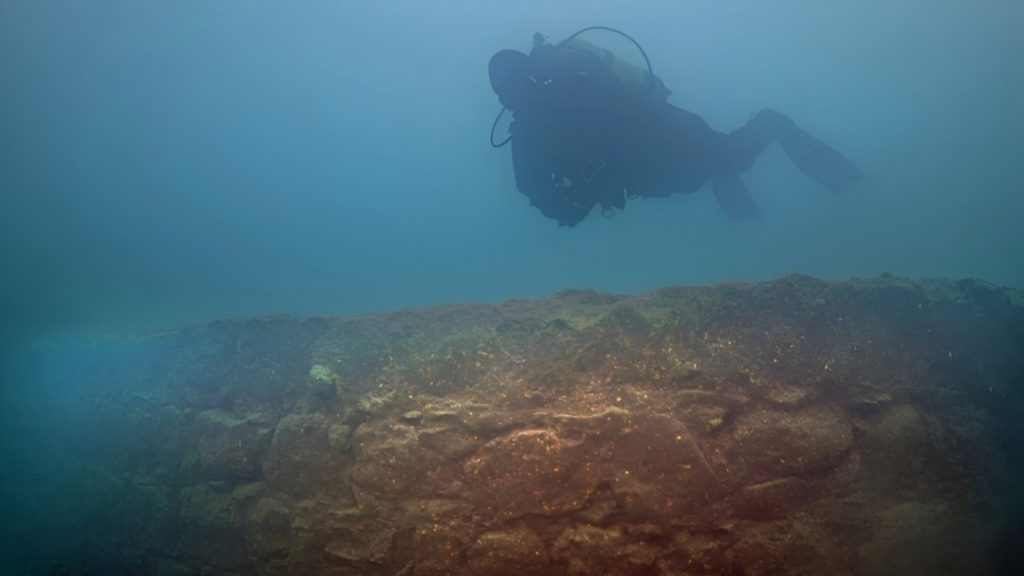
These tales, however, lingered long enough for people to make people wonder. Could there be some truth to the outlandish stories about an Atlantis-like city hiding in the waters of Lake Van? A group of scientists in the 1950s even embarked on a survey of the lake to see if these rumors were true. With the limited technology of the time, this group was unable to locate submerged structures.
Scholars Tried to Learn More About Urartian Culture … But It Proved Deadly
In the early 1800s, scholars in both France and Germany were inspired by reading The History of Armenians. This medieval text was written by Movses Khorenatsi, a noted historian, who lived between 410 and 490 AD. His work described a great Urartian city near Lake Van and linked it to a somewhat mythical figure in Armenian legend … Ara the Beautiful, a particularly handsome king.
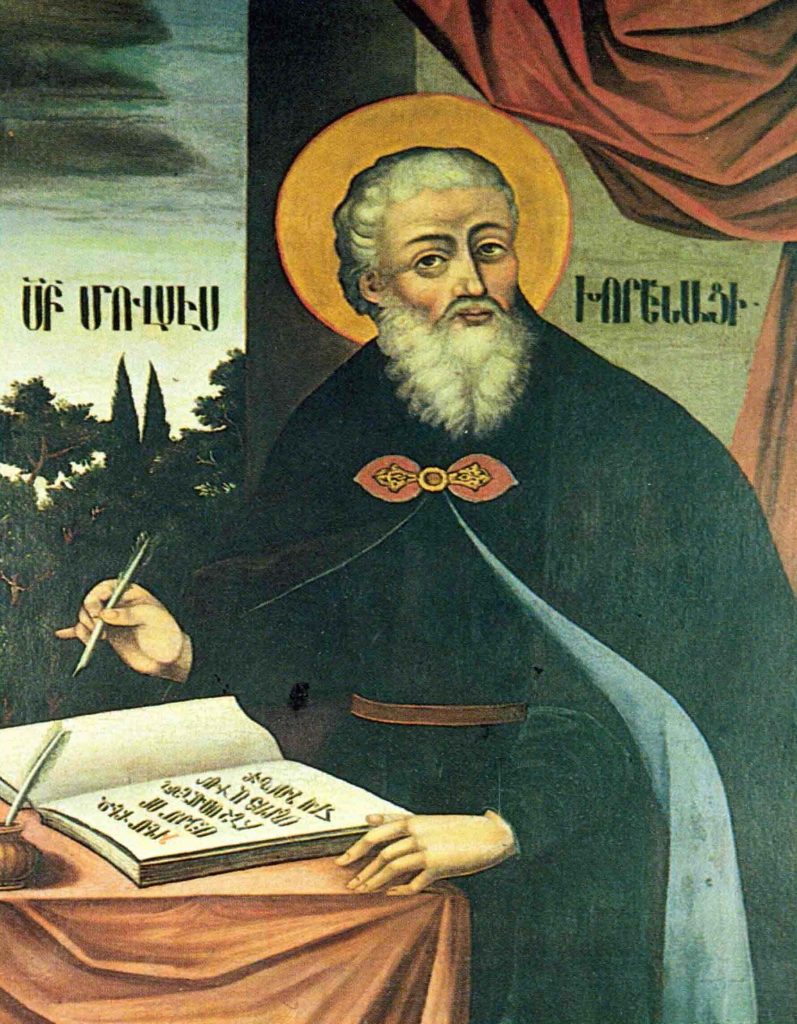
In 1827, a German professor named Friedrich Eduard Schulz, embarked on a trip to the Lake Van region to investigate the information in Khorenatsi’s writings. There, Schultz found cuneiform inscriptions, as well as documents written in Armenia and an unknown language, all of which he copies into his notebook. Unfortunately, Schultz and his team were murdered by Kurds in 1829. His notes were later published.
Archeology Is Dangerous Work
A subsequent expedition into the region located a stele in the Kelishin Pass on the present-day border between Iraq and Iran. The inscription on this stele was written in both Armenian and the unknown language. Like the Rosetta Stone, this stele could be the key to deciphering the unknown language.
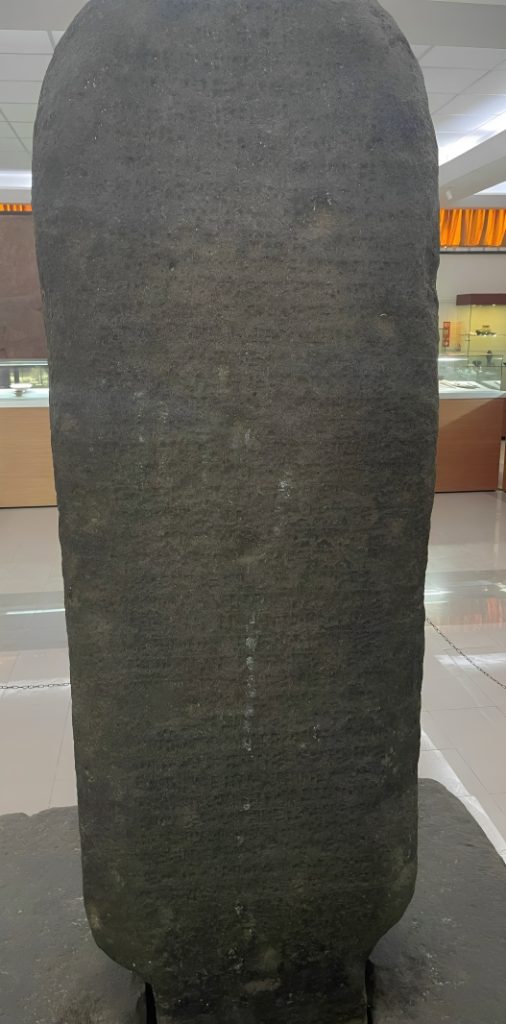
A British anthropologist visited the stele in 1828, but the stele was encased in ice. A few years later, a German scholar tried to copy the writing on the stele. He and his party were, like Schultz, attacked and killed by Kurds. Yet another group of scholars reached the site in 1898 only to be attacked by Kurds. This group barely escaped with their lives. The social and political volatility of the region helped to keep its secrets.
A Modern-Day Investigation of Lake Van
It took until recently before scholars and archaeologists were ready to take another look at Lake Van and, more importantly, what lies within its depths. A team of dedicated and curious explorers from the Yan Yuzuncu Yil University… spurred on by persistent stories of anomalies on the floor of the lake … used the latest technology to aid them in their quest.
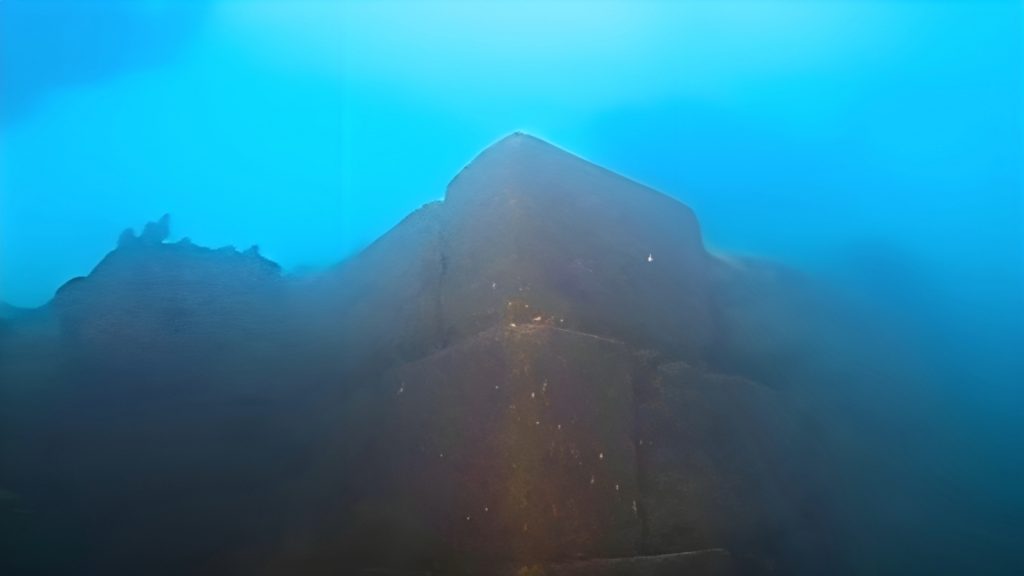
In addition to sonar equipment and remote cameras, the team included some of the area’s most experienced divers. At first, the team was treated to a first-hand look at Lake Van’s unusual geographic features. Next, they discovered a treasure trove of artifacts of the past. But the biggest find was yet to come.
Patience Pays Off
After days of searching and countless hours in the water, the dive team, headed by its leader, Tahsin Ceylan, made the discovery of a lifetime. Through the clear water of Lake Van, Ceylan and the other divers ran into a wall … literally!
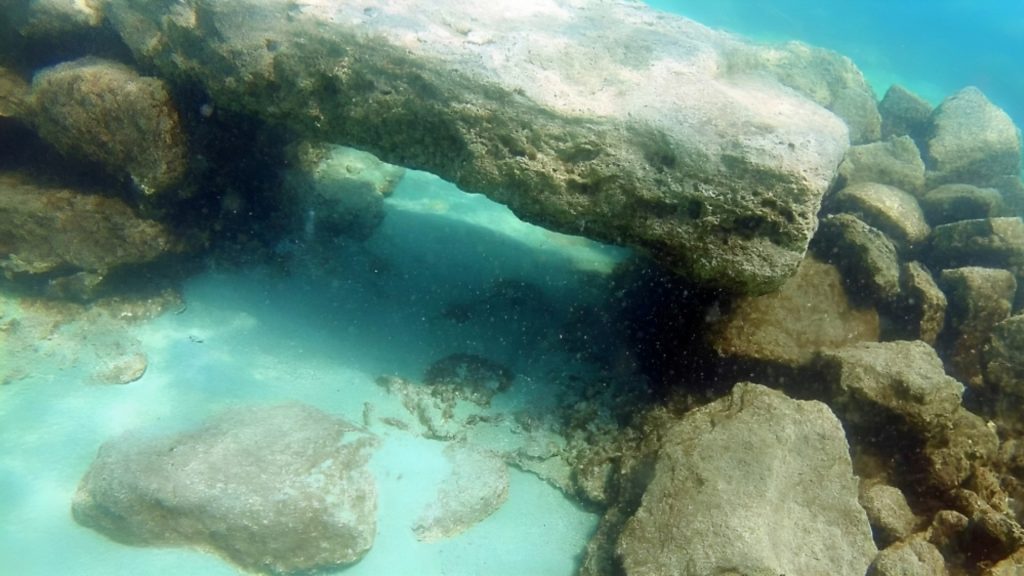
They had discovered the well-preserved ruins of an Iron Age castle. And a large one, at that! The stone walls stood more than 13 feet tall and extended for over two-thirds of a mile! The cold and salty water of Lake Van helped keep the castle in pristine condition all these years.
More Questions Than Answers
The discovery of the submerged castle was incredible, but it created more questions than answers. To learn more about the magnificent find, Ceylan and the dive team would need to visit the structure many more times to glean clues to explain its mysterious past.

During these dives, the researchers noted that some portions of the castle had collapsed, yet some were in remarkable condition. Amazingly, many of the walls featured carvings and engravings that can still be seen. One common motif through the submerged castle was the image of a lion.
The Lion’s Castle
In antiquity, lions were symbols of power and royalty. Did the presence of the lion motif mean that this castle was once the center of power for a formidable king or queen? To discover the ruler who built this impressive, but ill-placed castle, scholars first needed to determine when it was constructed.
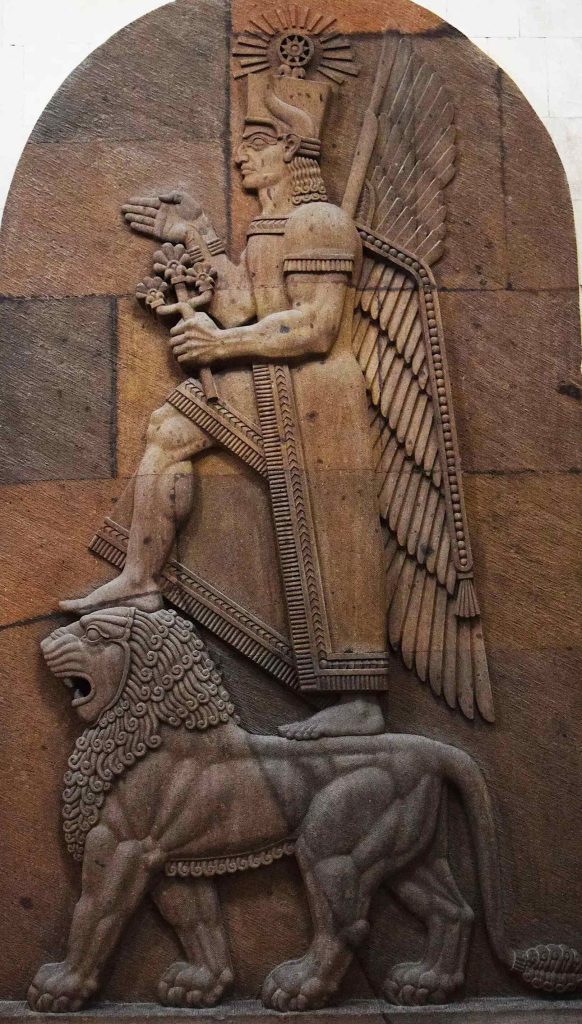
Some of the stones and building methods appeared consistent with the medieval era, but others seemed much older … perhaps dating back to the Urartian kingdom. As scholars pondered this, an intriguing theory emerged. What if the people of the area used building materials from existing structures when building this castle? They certainly wouldn’t be the first people to recycle, and this idea fits the evidence. But to make an educated guess about the castle’s owner, scholars would need to do a deep dive into the known history of the Urartu civilization.
Who Were the Urartian People?
Urartu was an Iron Age kingdom that flourished in the area of Lake Van from the 9th to 6th centuries BCE. Its territory stretched from the Lesser Caucasus Mountains to northern Iraq and from the west edge of Lake Urmia to the east bank of the Euphrates River. The Urartian people used a type of cuneiform writing and spoke their own language, which was borrowed heavily from Armenian.
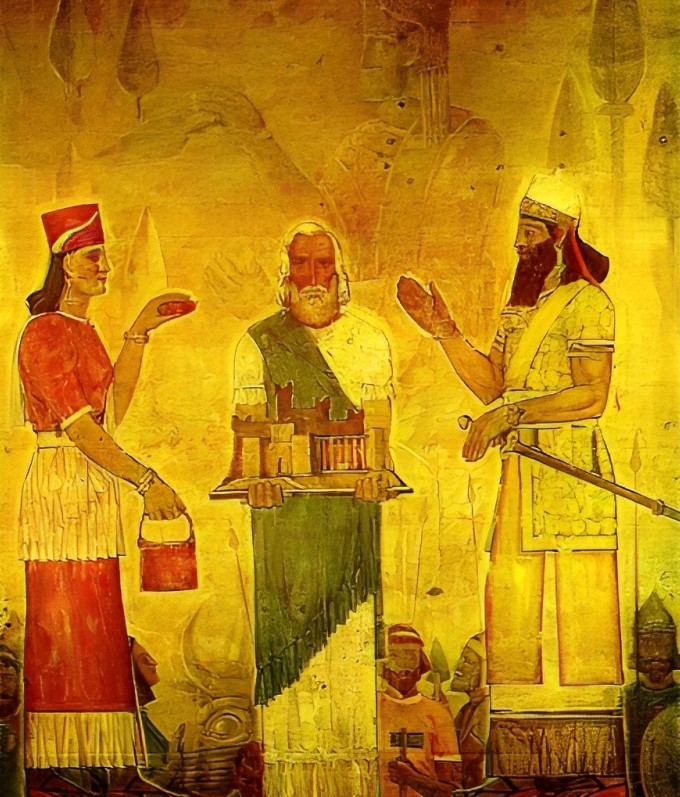
Its location put Urartu in near-constant conflict with the Assyrians. Because the Urartian people were expert metalworkers, they had the upper hand against the Assyrians for some time. In fact, they were, at one time, the most powerful kingdom in the region.
A Clue Written in Stone
Divers found a reference to a mighty Urartian king written on the walls of the sunken castle. Could it be that the castle was once the home of the hero of the Urartu kingdom, King Rusa? The timing was consistent with his reign.
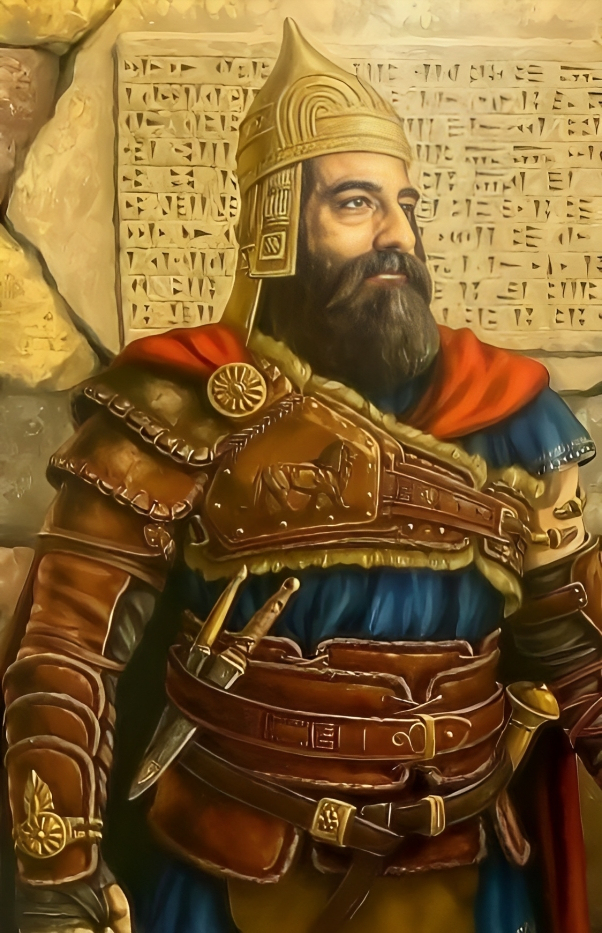
But who was this king and why was he a legendary figure in Urartian and Armenian history? King Rusa was the son of King Sarduri II, a beloved Urartian monarch. When Sarduri died, the crown passed to Rusa. Prior to his coronation, Rusa was a force on the battlefield. A decorated soldier, he helped his people conquer several territories belonging to the Anatolian people.
A King in Conflict
Once he ascended to the throne, Rusa faced a major threat to the security of his kingdom. The leaders of the territories Rusa claimed as a soldier teamed up to win their land back. He could defeat one enemy at a time … but could he fight on several fronts?
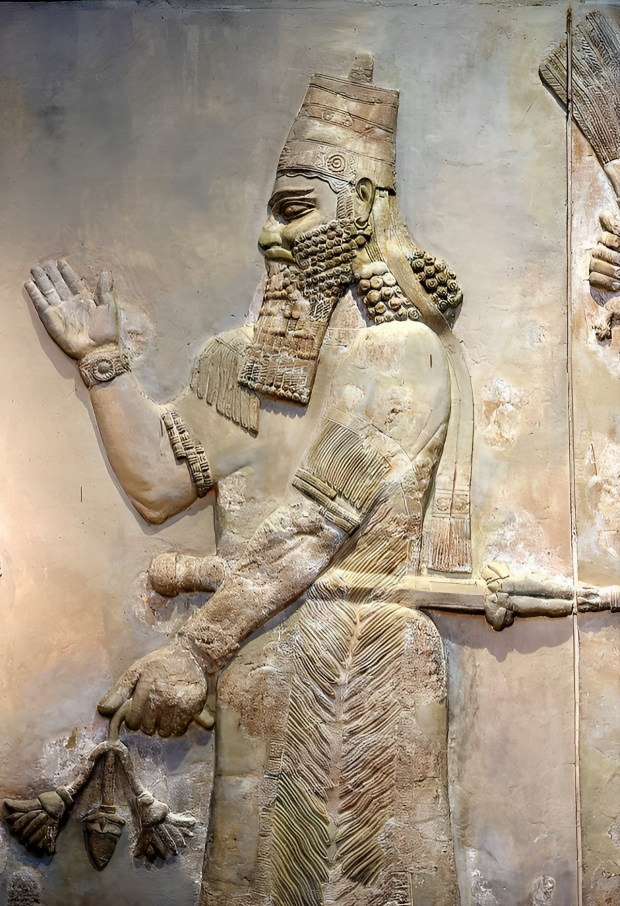
Leading up the invading enemies was another newly crowned king, Tiglath-Pileser III, ruler of the Neo-Assyrian Empire. He amassed a large army and made it his personal mission to liberate the lands that King Rusa had taken. King Tiglath-Pileser III was charismatic and well-liked. He rallied his people for battle against the Urartians.
A Castle Fortress Defended by a Lake
The construction of the castle at Lake Van coincided with the great battle between King Rusa and King Tiglath-Pileser III. The castle’s location on the shoreline of Lake Van, the size of the building, and the height of the walls are all signs that the castle also served as a fortress.

While some people have wondered if the war with King Tiglath-Pileser III somehow resulted in the destruction of the castle, it seems unlikely that the Assyrians had the ability to raise the water levels of Lake Van enough to flood out their enemy. It is not entirely out of the question, however. There are documents noting that King Rusa commissioned a project to reroute a river so we know that people at that time were capable of feats of engineering.
Victorious in Battle
The clashes between King Rusa and King Tiglath-Pileser III were well documented. We know that both sides were determined to own the land in question and that they were willing to fight hard for it. In the end, however, it was King Rusa who was victorious.

His victory was short-lived. Years of constant war had depleted the Urtartu resources. King Rusa had neglected some of the basic infrastructure of his own kingdom while he was concentrating on the war effort. While the first half of his reign was marked by constant war, the second part focused on rebuilding the kingdom and regaining its former glory. When he died, he left behind a kingdom on the decline.
The End of the Urartu Kingdom
By 612 BC, Urartu’s great enemy, the Assyrians, were defeated by the Scythians. The Scythians and their ally, the Medes, next turned their attention to Urartu. The weakened Urartian kingdom was an easy victory for the combined forces of the Scythians and Medes. In 590 BC, Urartu was effectively over.

A few centuries later, the region was under the control of the Armenian people who made it their own. They renamed Urartian place names with Armenian ones and built their castles, churches on top of the ruins of older structures, and relegated the ancient history of Urartu to the dusty backroom of history. It took curious scholars and an incredible discovery in Lake Van to help bring the story of this long-forgotten kingdom to light once again.

